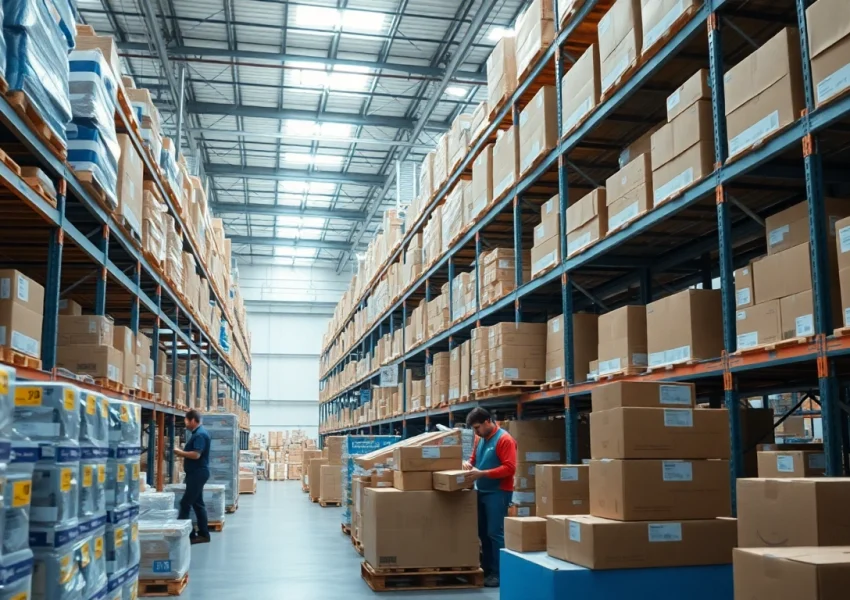Introduction to Amazon FBA Wholesale
In the expansive world of e-commerce, many sellers are turning to the amazon fba wholesale model to streamline their operations and reach a wider audience. This strategy integrates two powerful concepts: Amazon’s Fulfillment by Amazon (FBA) program and the wholesale distribution model. By marrying these two elements, sellers can simplify logistics while benefiting from Amazon’s vast customer base. But what exactly does Amazon FBA wholesale entail, and how can you navigate its complexities for success?
What is Amazon FBA Wholesale?
At its core, Amazon FBA wholesale is a method of selling products on Amazon through the wholesale model while utilizing Amazon’s fulfillment services. Sellers purchase products in bulk from wholesalers or manufacturers, then send these products to Amazon’s warehouses. Amazon takes care of storage, packaging, and shipping directly to customers. This approach allows sellers to focus on sourcing products and growing their business rather than getting bogged down in logistics and order fulfillment.
Benefits of Using Amazon FBA Wholesale
There are several compelling benefits to adopting the Amazon FBA wholesale approach:
- Enhanced Scalability: The model allows sellers to scale their business without the complexities of handling storage and shipping. Amazon’s infrastructure supports massive growth.
- Prime Eligibility: Products fulfilled by Amazon are eligible for Prime, which attracts a large base of loyal customers looking for fast shipping.
- Inventory Management: Sellers benefit from Amazon’s sophisticated inventory management tools, which helps track stock levels and sales trends.
- Trust and Credibility: Selling on Amazon leverages the marketplace’s credibility, providing assurance to customers regarding quality and reliability.
- Focus on Business Development: By outsourcing fulfillment, sellers can concentrate on driving sales through marketing, product sourcing, and customer engagement strategies.
Key Terms and Concepts in Amazon FBA Wholesale
Understanding the terminology and concepts surrounding Amazon FBA wholesale is essential for successful navigation of this business model. Here are some key terms:
- Fulfillment by Amazon (FBA): A service that allows sellers to utilize Amazon’s extensive fulfillment network.
- Wholesale: The practice of buying large quantities of goods to resell at a profit.
- Inventory Turnover: The rate at which inventory is sold and replaced within a given time frame, crucial for managing cash flow.
- Margins: The difference between the cost of goods sold and the selling price, impacting overall profitability.
- SKU: Stock Keeping Unit, a unique identifier for products within the inventory system.
Finding Reliable Suppliers for Amazon FBA Wholesale
How to Identify Potential Wholesalers
Identifying reliable wholesalers is one of the most significant steps in establishing a successful Amazon FBA wholesale business. Here are strategies to find potential suppliers:
- Industry Networks: Utilize online forums and social media groups comprised of e-commerce entrepreneurs to share leads on reputable wholesalers.
- Wholesale Directories: Websites that list verified wholesaler information, including their categories of products and contact details.
- Trade Shows: Attending industry-specific trade shows can provide direct access to numerous suppliers, enabling you to establish personal connections and negotiate terms.
- Online Research: Exploring platforms such as Google or B2B marketplaces to find wholesalers and manufacturers with strong online presences.
Evaluating Supplier Credibility
Once potential suppliers are identified, the next step is to evaluate their credibility. Steps to ensure you partner with trustworthy wholesalers include:
- Check References: Look for reviews and feedback from other sellers who have worked with the suppliers.
- Request Samples: Before making a significant purchase, request samples of the products to assess quality firsthand.
- Verify Business Credentials: Investigate business licenses, financial stability, and other credentials to ensure reliability.
- Assess Communication: Aim for suppliers who are responsive and open to questions since effective communication is critical in maintaining relationships.
Building Strong Relationships with Suppliers
Having a solid relationship with suppliers can lead to better pricing deals, priority service, and favorable contract terms. Here’s how to foster strong relationships:
- Maintain Regular Communication: Keep lines of communication open and stay in frequent contact to build rapport and discuss needs or issues as they arise.
- Be Transparent: Discuss your business goals, inventory needs, and any concerns that might impact your partnership.
- Invoicing and Payments: Ensure timely payments and honor agreed terms to build trust and support a mutually beneficial relationship.
- Feedback Loop: Provide constructive feedback about their service and product quality, establishing a collaborative partnership.
Product Selection Strategies for Amazon FBA Wholesale
Researching Profitable Product Categories
Choosing the right products is a critical component of the Amazon FBA wholesale model. Here are ways to research profitable categories:
- Market Analysis Tools: Use analytics tools to assess trending product categories and identify potential revenue streams.
- Competitive Analysis: Evaluating successful competitors can reveal gaps in the market that you can capitalize on.
- Consumer Trends: Follow online trends and consumer tastes via social media, blogs, and industry publications to stay updated on popular products.
Using Market Trends to Inform Choices
Understanding market fluctuations can be advantageous when selecting products:
- Seasonal Trends: Be aware of seasonal products that may spike during specific times of the year, allowing for strategic purchasing.
- Emerging Brands: New brands might have less competition and could be worth incorporating into your inventory as they gain popularity.
- Feedback and Reviews: Analyze customer feedback on existing products to identify strengths and weaknesses, guiding your selection process.
Testing Products Before Committing to Bulk Orders
Before placing large orders with suppliers, it’s crucial to test products. Here’s how:
- Small Batch Orders: Start with smaller quantities to evaluate sales performance without overcommitting financially.
- Market Feedback: Use pilot campaigns or surveys to gauge customer response to new products.
- Track Performance Metrics: Monitor sales velocity and customer feedback closely; adjust purchasing strategies based on these insights.
Navigating Amazon’s Platform for FBA Wholesale
Setting Up Your Amazon Seller Account
To begin selling under Amazon FBA wholesale, you first need to set up an Amazon Seller Account:
- Choose a Selling Plan: Decide between an Individual or Professional selling plan based on your business needs and projected sales volume.
- Complete Registration: Provide necessary information, including business name, address, and tax information to finalize your account.
- Familiarize with Seller Central: Dive into the Amazon Seller Central interface to understand your dashboard and the tools available for managing your listings.
Understanding Amazon’s Fulfillment Process
Familiarity with Amazon’s fulfillment process is key to successfully managing your inventory:
- Shipping to Amazon: Learn about Amazon’s guidelines for creating shipments and the required labeling and packaging standards.
- Fulfillment Cycle: Understand the cycle from receiving your product at Amazon’s warehouse to it getting shipped to customers.
- Dealing with Returns: Familiarize yourself with Amazon’s return policy and processes to handle returns effectively and maintain customer satisfaction.
Managing Inventory Effectively
Effective inventory management ensures smooth operations and optimizes cash flow:
- Inventory Alerts: Set up alerts within your seller account to monitor stock levels and prevent stockouts.
- Use Analytics Tools: Utilize Amazon’s inventory performance tools to track turnover rates and adjust replenishment accordingly.
- Regular Audits: Perform inventory audits to reconcile physical stock against marketplace data regularly.
Measuring Success in Amazon FBA Wholesale
Key Performance Indicators to Track
To evaluate success, it’s essential to track various KPIs:
- Sales Growth: Monitor month-over-month and year-over-year sales growth to determine market position.
- Profit Margins: Calculate profit margins to ensure your business remains profitable after accounting for all costs.
- Inventory Turnover Rate: Regular analysis of how quickly inventory is sold can guide restocking strategies.
Adapting Strategies Based on Performance Metrics
Leveraging performance insights is crucial for ongoing success:
- Refine Product Selection: Use sales data to pivot your inventory towards more profitable items.
- Adjust Marketing Strategies: Based on customer data and engagement metrics, adapt marketing campaigns to boost visibility and sales.
- Experiment with Pricing: Analyze sales trends to optimize pricing strategies, ensuring alignment with customer expectations and market conditions.
Scaling Your Business for Long-Term Growth
To achieve long-term success in the Amazon FBA wholesale model, your business must be ready to scale:
- Diversification: Gradually expand product lines to tap into new markets and reduce dependency on a few core products.
- Reinvest Profits: Channel profits back into business operations to promote growth in inventory, marketing, and technology.
- Leverage Feedback: Continuously seek customer feedback to improve offerings and service, fostering trust and loyalty.





